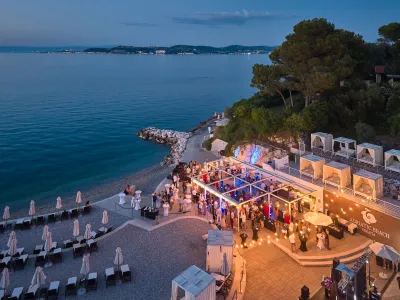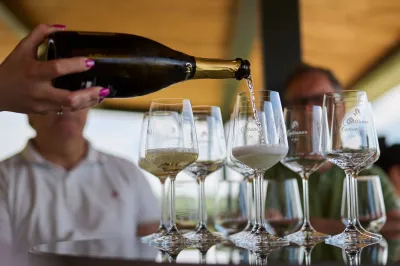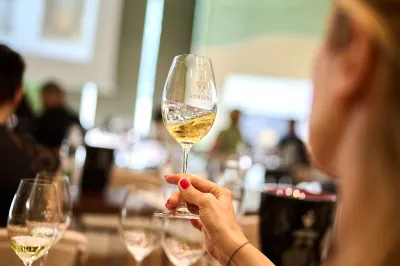History of winemaking
From ancient times
History of winemaking in Istria
Since ancient times, Istria has been known as the land of beautiful vineyards and good wine. The quality of Istrian wine in a certain historical period conveys the quality of life of the Istrian population. When life was better, the wine was better and vice versa. The best quality Istrian wine reached the tables of wine connoisseurs in amphorae, barrels and bottles all over Europe for centuries, but most of it was consumed in Istria as an everyday and holiday drink. The wine was given the honor of being returned to the vineyard from which it came in small barrels, barila, tucked into the belt of the winegrowers, helping them to more boldly and cheerfully nurture the vines that will give birth to the future wine.
Recent past
Commercialization of production
Istria's wine past has only been partially explored, but even a brief glimpse into the past reveals the centuries-old unbreakable bond between people and their favorite drink and elixir of life. Here, we will only briefly refer to the recent past, when the commercialization of wine production occurred thanks to the Austrian agricultural policy, which placed significant emphasis on viticulture. The new wine period began in the middle of the 19th century, and the key was the Istrian Parliament's decision of 5 September 1874, that established the Istrian Wine and Fruit Growing Institute in Poreč/Instituto eno-pomologico Istriano, which began its work in 1875.
Agricultural school
Modernization of cultivation, processing and opening of modern wine cellars takes place, and due to favorable credit conditions and incentives, more and more residents seriously started to engage in viticulture and winemaking, and soon, on 8 February 1883, the Agricultural School was founded at the Institute. The Society for Agriculture of Istria, the Agricultural Bank, etc. are the leaders of many organizations that were founded throughout Istria, and were involved, among other things, in the development of viticulture and winemaking.
The first modern cellar
It was in those years that Istria would be affected by phylloxera, and the newly founded institutions and the government's traveling teachers of the agricultural profession would play a key role in the resurgence of viticulture after years of despair and anxiety over the fate of the vine and people.
However, the most intriguing and almost mythical support for the development of viticulture is represented by the opening of the first modern cellar in 1882 on the ground floor of the Istrian parliament hall in Poreč.
A first-rate political topic
Wine and politics
Previous studies of the work of the Istrian Parliament have dealt almost entirely with political and national conflicts, neglecting development strategies and the common fight against phylloxera, advocacy for the reduction of wine taxes and rebellion against imported wines. The fight for Istrian viticulture and winemaking was waged wholeheartedly regardless of political and national affiliation, what could be expected from the Parliament sitting above a wine cellar. After all, even in earlier periods there was an unbreakable connection between the rulers and the production and consumption of wine. Wine has always been a first-class political topic in Istria. This is also evidenced by the promotional material of Matteo Bartoli from Vrsar for the 1907 elections, on which it was written: Electors, no one fought for a law against adulterated wines except for Bartoli/Elettori, nessuno ha combatuto per la legge contro i vini artificali se non che Bartoli.
The first high-level recognitions
Although Istrian winemakers have certainly participated in European and global wine exhibitions since the middle of the 19th century, Istrian wines received their first major recognition in 1902 at the International Exhibition of Wine in Turin. A year earlier, the First Istrian Public Wine Tasting was held in Pazin, and four years later, an Agricultural School was opened with classes in the Croatian language.
The beginning of the 20th century is the beginning of the Istrian wine boom, and Teran is a variety that embodies Istrian wine progress. The construction of the new building of the Agricultural Institute in Poreč in 1907 is a symbol of the moment that was prepared in previous decades. The magazine Istarska poljoprivreda/L'Istria Agricola, which was published in the same year, was also of great importance, publishing instructions and recommendations for farmers and bringing information about courses and exhibition fairs. Four years later, the magazine Razumni gospodar was published in Pazin. However, at that time there were already advertisements for Istrian wine in ordinary newspapers throughout the Austria-Hungary. We must not forget the importance of winegrowing and wine cooperatives, which bring together more and more winemakers and open cooperative cellars throughout Istria. Soon there will be a new stagnation caused by the drop in the price of wine due to increased production, and in order to overcome the crisis more easily, wine producers and traders will be united in the Istrian Wine and Trade Association/Enopolio Istriano. Difficult decades of Istrian history will follow.
Fair in Rijeka
The International Fair in Rijeka in 1926, from which we bring a photo of the exhibition area of the Istrian Chamber of Commerce and Industry/Camera di Commercio e Industria dell'Istria, where the wines of the Istrian Agricultural Institute in Poreč/Instituto Agrario Provincale di Parenzo were presented, is the beginning of closing of Istrian winemaking into its borders because it cannot follow Italian winemaking, and Istria becomes just one of the wine-growing Italian provinces. The National Grape Holiday/Festa Nazionale dell'Uva served since 1930 as a propaganda event, and high taxes on wine and incomprehensible bureaucratic decisions will lead winegrowers to the underground economy.
The people of Istria have always celebrated wine and it didn't matter if they did it collectively, like for example on Martinje (St. Martin's Day), or if they were admiring their grapes on a solitary walk and secretly judging their neighbor’s yield and nodding their heads with satisfaction looking at the full barrels.
Istria's viticultural and winemaking past deserves more than these few lines, but they nevertheless successfully illustrate the paths taken by the Istrian people in search of a better life and better wine.










































